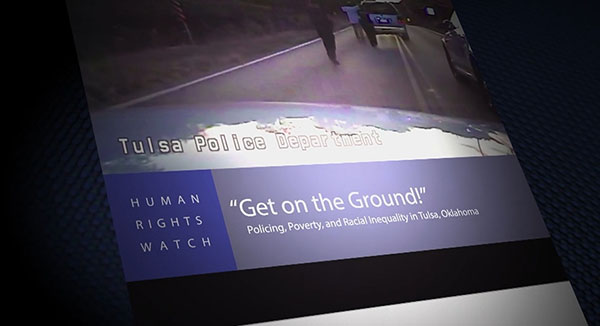|
Tulsa Timeline
GREENWOOD
a subdued history |
| September 2019 |
|
|
 |
|
Human Rights Watch
Policing, Poverty, and Racial Inequality in Tulsa, Oklahoma.
In the report, referred to as "a case study of abusive, overly aggressive policing in the U.S.", it was found that police used physical
violence against black people at 3 times the rate than that of the white population of Tulsa. Former Tulsa Police Chief Drew Diamond
described racism within the ranks of the Tulsa Police Department as a problem that existed when he joined the force in 1969, and that it
is still a problem today. He describes officers as being in the "warrior mode" that are patrolling "war zones" while looking for the war.
Additionally, Human Rights Watch likened the police presence in north Tulsa to a military style occupation. |
|
|
|
|
|
Sources
| [1] Brown, D. (2021, February 04). Red Summer: When Racist Mobs Ruled. How a Pandemic of Racial Terror Led to the 1921 Tulsa Race Massacre. American Experience. PBS. |
| https://www.pbs.org/wgbh/americanexperience/features/t-town-red-summer-racist-mobs/ |
|
| [2] Burch, R., Reid, R., & Ferguson, K. (Producers). (2021). Tulsa Race Massacre: 100 Years Later [Video]. PBS. |
| https://www.pbs.org/video/tulsa-race-massacre-100-years-later-vdv9tx |
|
| [3] Silvers, J., Brown, D., & Stover, E. (Producers). (2021). Tulsa: The Fire and the Forgotten [Video]. PBS. |
| https://www.pbs.org/video/episode-1-zew2v8 |
|
| [4] PBS News. (2024, June 12). Oklahoma’s Supreme Court Dismisses Lawsuit from Last 2 Survivors of Tulsa Race Massacre Seeking Reparations. |
| https://www.pbs.org/newshour/nation/oklahomas-supreme-court-dismisses-lawsuit-from-last-2-survivors-of-tulsa-race-massacre-seeking-reparations |
|
 |
|


























